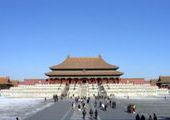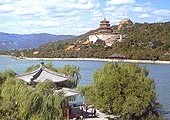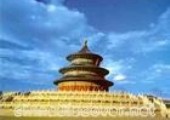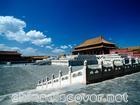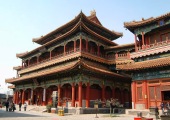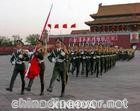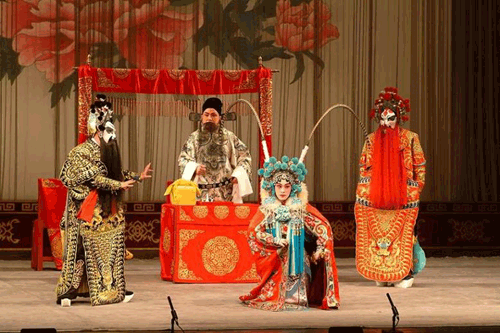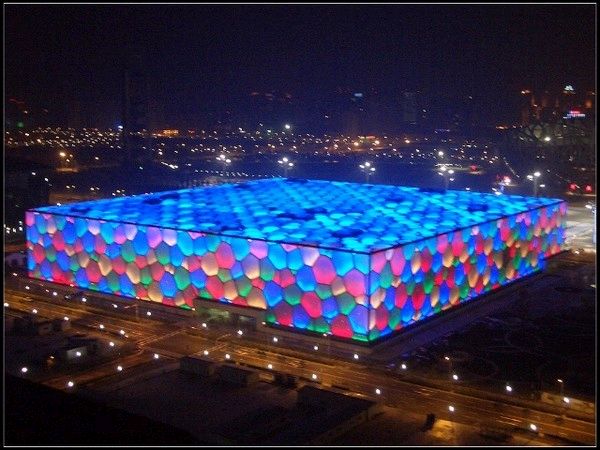About Beijing
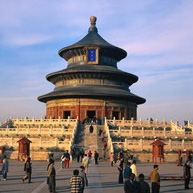
-
City Name:Beijing ("Northern Capital", Chinese: 北京, Pinyin: beijing)
-
Population :Municipality 17,430,000 , Metro: 11,940,000
-
Location :Situated at 40° north latitude and 116° east longitude. It is 43m above sea level and 183km from the sea.
-
Overview:As the center of 1000 years of imperial rule, Beijing was built to express the power of the emperor. Long, straight boulevards and avenues are crisscrossed by a network of lanes. Beijing features a vast number of "must-see" attractions.
Overview
As the polical and cultural heart of China, Beijing is the Coultural Soul that's mirrored in its spectacular palaces, temples, parks and wizened men with pet songbirds share the streets and foreign investors woth migrants from the countryside. Along with its people, historical sights and vibrancy, Beijing's drawing cards include its mouth-watering cuisine, fabulous shopping and triving nightlife. In short, a thrilling and unforgettable experience awaits visitors in Beijing.
know more
For centuries Beijing has been a magnet for scholars, merchants and artists who have given it a a cultural life unrivalled in China. Beijing culture is a fusion of indigenous and imported traditions since the populace has always included provincial and ehnic minorities.
Local history begins some 500,000 years ago at a time when the north China plain, which encompasses Beijing, was covered in semitropical forest and dotted with lakes. Modern human beings began to settle in the area around 3000 BC, surviving on rudimentary agriculture and animal husbandry.
During the Eastern Zhou Dynasty (c. 11th century-771 B.C.), the Spring and Autumn Period (770-476 B.C.) and the Warring States Period (475-221 B.C.), Beijing was the capital city of the State of Yan, which was ruled by dukes or princes under the emperor. From the Qin Dynasty (221-207 B.C.) and the Han Dynasty (206 B.C.) to the Northern Song Dynasty (960-1127),Beijing was a major city and also a strategic point in northern China.
During the Song dynasty, a tribe from the Mongolian steppes called the Qidan swept down into north Chian and founded the Liao dynasty, eventually making their capital, called Yanjing, at what is now Beijing. The name Yanjing survies today as a brand of a popular local beer.
The Liao was in turn defeated in 1125 by invaders form Manchuria. The latter founded the Jin dynasty and ruled much of north China from their capital , Z hongdu, which also stood n present-day Beijing. Graced with handsome palaces, Zhongdu had over a million residents-roughly the population size of ancient Rome at its peak in the 1st century AD. In 1215, Kublai, Genghis's grandson, completed the Mongol conquest of China, crowning himself emperor and founding the Yuan dynasty in 1271, then he built his capital, Dadu, on the ruins of Zhongdu. It was the first time that all of China was governed from the city would become Beijing.
In 1368, a former peasant and rebel leader named Zhu Yuanzhang overthrew the Yuan dynasty, took Dadu and established the Ming dynasty. He renamed the city Beiping, meaning Northern Peace.
In 1644, the Manchus conquered Beijing. By adopting the Ming administrative system, embracing Confucian values and maintaining a strong army, the Manchus were able to co-opt the scholarly gentry class and remain in power until 1911.
In 1928, the capital was moved to Nanjing and Beijing was once again renamed Beiping, a name that it held until 1949. During this period, Beijing was the scene of much political upheaval. On January 31, 1949, the victorious People's Liberation Army entered the city and in Tian'anmen Spuare on October 1, 1949, Mao Zedong proclaimed the founding of the People's Republic of China.
Must see
Great Wall
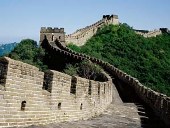
The Great Wall of China is the longest structure ever built. It is about 4,000 miles long, and it was built entirely by hand. About 1, 200 - 1, 500 miles of the Great Wall were built during the reign of Emperor Shi Huangdi (Qin Dynasty). The Great Wall crosses northern China from the east coast to the central part of China...more
Forbidden City
Spending the day exploring every passageway in the Forbidden City then Climing to the top of the Coal Hill for a panorama view of the Forbidden City and downtown Beijing is really a Memorable Experience. The abode of 24 Ming and Qing emperors of the Celestial Empire, the Forbidden City is fittingly awe-inspiring sight. Enclosed behind its moat and 9.9m-high walls are 980 buildings, vast courtyards and long corridors that occupy a total area of 720,000m2 ...more
Beijing Lhama Temple
The Lama Temple is an island of Buddhism in the heart of the concrete jungle. Monks in wine-colored robes live, study and pray in its pleasant gardens and halls. Decorated with delicate scrolls and massive icons, its buidings are a hybrid of Tibetan, Mongolian and Han architectural styles. The Lama Temple is a tranquil spot, except during the Spring Festival (Chinese New Year) when it seems all of China's Buddhists throng its altars to burn bushels of incense and pray for good fortune. ...more
Tian'anmen Square
The Tiananmen Square in the center of Beijing, is said to be the biggest square in the world. It is 880 meters from north to south, and 500 meters from east to west, with total area of 440,000 square meters and can hold one million people. Tian'anmen Spuare is the spiritual heart of the world's most populous country. It earned this distinction by serving as the stage for momentous historical events, like the demonstrations on May 4th 1949 ...more
